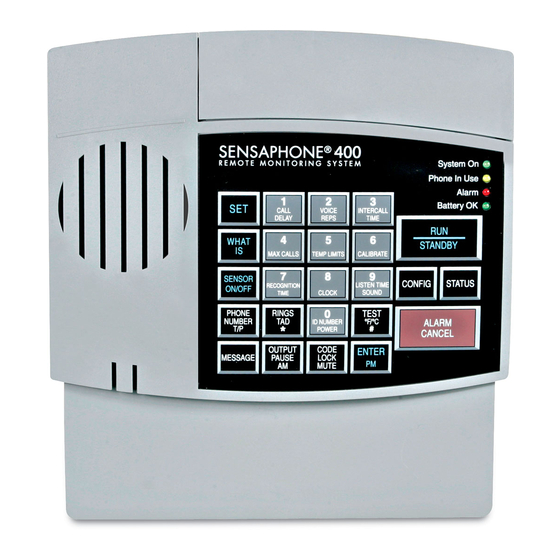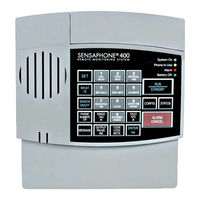
Sensaphone 400 Manuals
Manuals and User Guides for Sensaphone 400. We have 2 Sensaphone 400 manuals available for free PDF download: User Manual
Sensaphone 400 User Manual (134 pages)
REMOTE MONITORING SOLUTIONS
Brand: Sensaphone
|
Category: Telephone
|
Size: 4 MB
Table of Contents
Advertisement
Sensaphone 400 User Manual (136 pages)
Brand: Sensaphone
|
Category: Security System
|
Size: 6 MB

